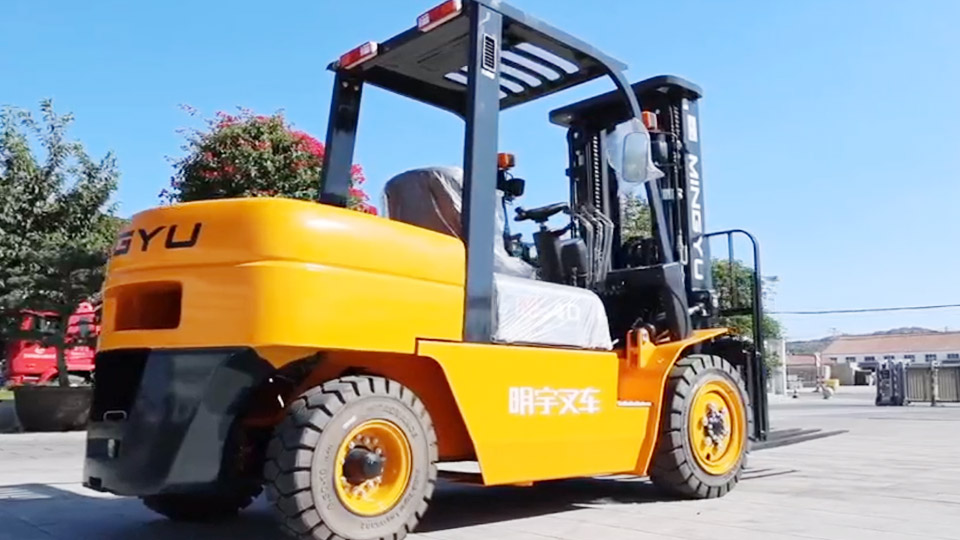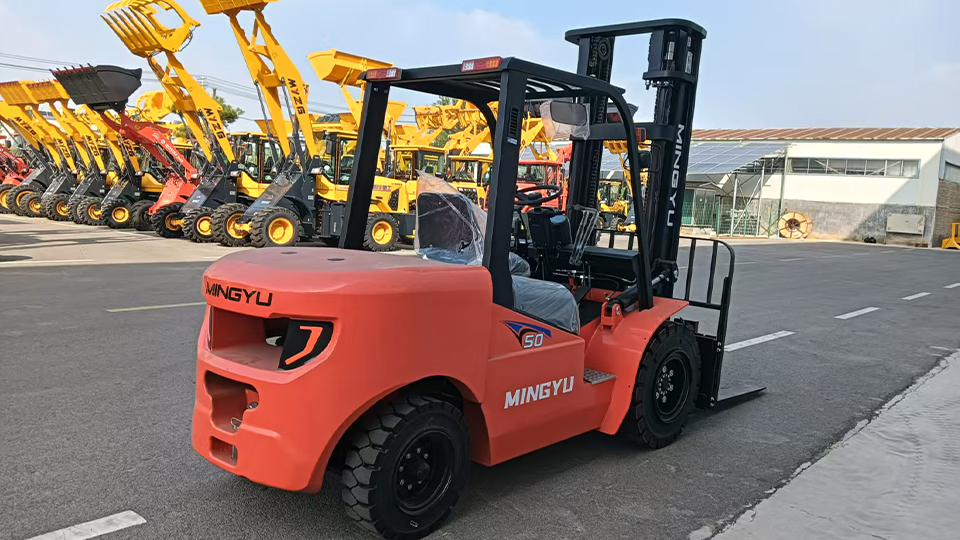
The Critical Distinction: Do You Need a Forklift License to Operate a Forklift?
The question of whether an individual requires a "forklift license" to operate a powered industrial truck (PIT), commonly known as a forklift, is one of the most persistent areas of confusion in workplace safety and compliance. The answer, while seemingly simple, involves a crucial technical distinction between the informal term "license" and the mandatory certification and training requirements set forth by regulatory bodies like the Occupational Safety and Health Administration (OSHA) in the United States.
This comprehensive technical article will dismantle the misconception of a single, government-issued "forklift license," clarify the binding legal requirements for operator competency under OSHA, and outline the exact steps an employer must take to achieve and maintain compliance.
I. The OSHA Standard: 29 CFR 1910.178
In the United States, the operation of powered industrial trucks, including forklifts, is governed by OSHA Standard 29 CFR 1910.178, specifically paragraph (l), which addresses "Operator Training."
The foundational principle of the OSHA standard is clear: Only trained and authorized operators shall be permitted to operate a powered industrial truck.

The Requirement: Certification, Not a License
OSHA’s standard does not mandate a universal, state-issued "forklift driver's license" akin to a motor vehicle operator's license. In fact, a state-issued driver's license is explicitly not a requirement for operating a forklift in the workplace, though individual employers may choose to impose such a requirement for their own policy reasons.
The legal requirement is certification.
A forklift certification is the employer's record and documentation proving that an employee has successfully completed the required training and evaluation, demonstrating competency to safely operate the specific type of powered industrial truck in the specific working environment.
In short:
Forklift License (Informal Term): Often used by the public or in job descriptions, but is not a legally defined or mandated credential by OSHA.
Forklift Certification (Legal Term): The mandatory, formal documentation, held by the employer, that proves an operator meets the full OSHA training and evaluation standard.
II. The Three Pillars of OSHA-Compliant Certification
The employer-led certification process is not a one-time class or a simple online test. It is a comprehensive, three-part program that ensures the operator possesses both the theoretical knowledge and the practical skills necessary for safe operation.
OSHA mandates that the training program must consist of the following:
1. Formal Instruction
This component covers the theoretical knowledge and fundamental principles of forklift operation and safety. It can be delivered through lectures, video presentations, written materials, or online courses.
Required topics for formal instruction include, but are not limited to:
Truck-Related Topics: Operating instructions, warnings, precautions, controls, engine/motor operation, steering and maneuvering, visibility, stability, inspection and maintenance, refueling/recharging.
Workplace-Related Topics: Surface conditions, load composition and stability, pedestrian traffic, narrow aisles and restricted areas, hazardous locations, ramps and sloped surfaces, and the operation of the powered industrial truck being used under any unique conditions of the workplace.
OSHA Requirements: A review of the relevant sections of the 29 CFR 1910.178 standard.
2. Practical Training
Following formal instruction, the operator must undergo hands-on, practical training under the direct supervision of a qualified person. This component involves demonstrations by the trainer and practical exercises performed by the trainee.
The goal is to translate theoretical knowledge into practical, safe operating skills on the actual equipment the employee will use. Trainees are only permitted to operate the equipment under the direct supervision of a qualified person and where such operation does not endanger the trainee or other employees.
3. Operator Evaluation (Performance Test)
The final and most critical step is the formal evaluation. The employer must evaluate the operator's performance in the workplace and determine that the operator is competent to operate the powered industrial truck safely.
Crucially, a written test alone is insufficient. The evaluation must include a practical, hands-on demonstration of the operator's ability to safely:
Perform pre-shift inspections.
Maneuver the truck safely (forward, backward, turning).
Handle various loads (picking up, transporting, stacking, and unstacking).
Operate the equipment under the typical conditions and hazards of the specific worksite.
Only after the operator has successfully completed all three components—Formal Instruction, Practical Training, and Performance Evaluation—can the employer issue the final certification.
III. Employer Responsibility and Documentation
The ultimate responsibility for ensuring every forklift operator is fully certified rests with the employer. This is not a responsibility that can be fully outsourced to a third-party training provider.
The Certification Record
The employer must prepare and maintain a written certification record for each operator. This record is the primary document proving OSHA compliance. It must include:

The name of the operator.
The date of the training and evaluation.
The name of the person(s) performing the training and evaluation.
These records must be maintained at the workplace for the duration of the operator’s employment.
Site-Specific Training and Non-Transferability
A key aspect of OSHA certification is its site-specific and equipment-specific nature.
Equipment Specific: An operator must be trained and certified on the specific type of powered industrial truck they will use (e.g., a sit-down counterbalanced truck vs. a reach truck vs. an order picker). Certification for one type of truck does not automatically qualify an operator for another.
Site Specific: Training must cover the hazards of that specific workplace (e.g., floor conditions, traffic patterns, aisle widths, and materials handled).
This means a certificate from a previous job or a general training course only satisfies the "formal instruction" requirement. When a certified operator joins a new company or switches to a different type of truck, the new employer must still conduct the full site-specific practical training and performance evaluation before the employee is authorized to operate the equipment. The certification is not generally transferable between employers.
IV. Recertification and Refresher Training
The certification is not permanent. OSHA mandates that the operator's performance must be reevaluated by the employer at least once every three years.
However, refresher training and a new evaluation are required sooner than the three-year minimum in the following events:
The operator is involved in an accident or near-miss incident.
The operator has been observed to be operating the powered industrial truck in an unsafe manner.
The operator has received an evaluation that indicates they are not operating the truck safely.
There are changes in the workplace conditions that could affect safe operation (e.g., new racking, narrower aisles, new floor surface).
The operator is assigned to operate a different type of powered industrial truck from the one they were originally certified on.
The purpose of the three-year renewal cycle and the mandatory refreshers is to ensure that operator skills remain sharp, habits remain safe, and that operators are kept current on any new workplace hazards or equipment modifications.
V. Penalties for Non-Compliance
Operating a forklift without the required OSHA certification is a severe violation that carries significant consequences for both the employer and the employee.
OSHA Fines: Employers found non-compliant during an inspection face substantial financial penalties. Citations for "Serious" or "Willful" violations related to lack of operator training are among the most common and costly penalties levied by OSHA. These fines can easily total tens of thousands of dollars.
Increased Liability: In the event of an accident involving an uncertified operator, the employer's liability increases dramatically, leading to higher insurance costs, potential lawsuits, and worker’s compensation claims.
Safety Risks: The most important consequence is the elevated risk of injury or death to the operator and surrounding employees. Uncertified operators are statistically more likely to be involved in tip-overs, collisions, and pedestrian strikes.
Conclusion
The answer to the question, "Do you need a forklift license to operate a forklift?" is a qualified No, but you absolutely need a valid, documented, and site-specific Forklift Certification.
The term "license" is a misleading colloquialism. The true, non-negotiable legal requirement under OSHA's 29 CFR 1910.178 is a structured training and evaluation program, culminating in a certification record maintained by the employer.
Compliance is not merely about avoiding fines; it is about fulfilling the ethical and legal duty to protect employees from the severe hazards associated with powered industrial trucks. Every employer must ensure that the three pillars of training—formal instruction, practical practice, and documented performance evaluation—are met, and that the certification is renewed every three years or as conditions dictate. This systematic approach, and not an informal "license," is the only path to a safe and legally compliant material handling operation.
Name: selena
Mobile:+86-13176910558
Tel:+86-0535-2090977
Whatsapp:8613181602336
Email:vip@mingyuforklift.com
Add:Xiaqiu Town, Laizhou, Yantai City, Shandong Province, China